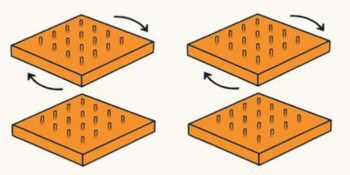Researchers in the US have invented a "nanoplotter" that can draw multiple copies of a nanometre-sized pattern at different places on a surface all at the same time. Seunghun Hong and Chad Mirkin from Northwestern University in Illinois have used the device to draw patterns of lines and dots just one molecule deep onto a metal substrate (Science 288 1808). Although their system uses only eight pens, the researchers say that it could be adapted to use a thousand pens in the same way. Their technique could then compete with other automated processes for imprinting patterns of molecules on surfaces, such as optical or stamping lithographic methods.
The researchers used eight ceramic tips that were connected via a cantilever array to an atomic-force microscope. The tips were coated with a molecular ink such as 1-octadecanethiol that diffused from the tip onto the gold substrate. The ink reacts with the gold to produce a stable monolayer structure on the substrate. A pattern can then be created by moving the microscope stage on which the substrate was attached.
One tip, designated the lead pen, was equipped with force sensors that monitored its position and controlled the width of the pattern. The other “writing” tips then simultaneously reproduced elsewhere on the surface the pattern generated by the lead pen. The researchers used their technique, which is known as “dip-pen nanolithography”, to draw lines, squares and hexagons, but in principle any pattern could be created. The technique can even be used to draw customized nanostructures made of different inks. “This work opens avenues for researchers to begin using dip-pen nanolithography and conventional atomic-force microscopy to do high-resolution and aligned patterning of nanostructures on a large scale that is automated and moderately fast,” say Hong and Mirkin.



